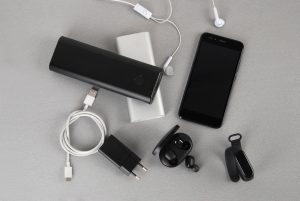
Speed networking is a dynamic and efficient method for professionals to expand their business connections quickly and effectively. Unlike traditional networking events, speed networking is structured to facilitate brief, focused conversations between individuals who are looking to exchange information and find mutual interests in a very short timeframe, often in just a few minutes per interaction. Given the brevity and intensity of these encounters, making a strong impression is crucial. Here are key speed networking strategies to master the art of speed networking and ensure that each interaction leaves a lasting impact.
Prepare Your Pitch
1. Craft a Concise Elevator Pitch: Your elevator pitch is your quick summary of who you are, what you do, and what value you can offer. It should be concise, clear, and compelling, ideally no longer than 30 seconds. Tailor your pitch to highlight elements most relevant to the networking event and anticipated audience to ensure it resonates effectively.
2. Highlight Unique Selling Points (USPs): Identify and emphasize what makes you or your business unique. This could be a particular skill, an innovative product, or a recent achievement. Distinctiveness is memorable, and distinguishing yourself from the crowd is fundamental in speed networking.
Engage Effectively
3. Practice Active Listening: Speed networking isn’t just about talking; it’s equally about listening. Show genuine interest in what others are saying by maintaining eye contact, nodding, and responding appropriately. This not only helps in building rapport but also in identifying potential areas for collaboration.
4. Ask Open-Ended Questions: Encourage dialogue by asking questions that require more than a yes-or-no answer. Questions like “What kind of challenges are you currently facing in your role?” or “What projects are you excited about right now?” open up the conversation and provide deeper insights into potential business opportunities.
Manage Your Time
5. Keep an Eye on the Clock: Each segment of a speed networking event is timed, so be mindful of the clock. Practice your pitch and your key questions to ensure they fit comfortably within the allotted time, leaving room for your counterpart to share their information as well.
6. Be Ready to Move On: When the time is up, be prepared to move on gracefully. A quick acknowledgment of the conversation and a statement of intent to follow up can neatly wrap up the discussion and set the stage for future interaction.
Follow Up
7. Effective Follow-Up: After the event, timely follow-up is critical. Send an email or connect on LinkedIn within 24 hours while the conversation is still fresh in both parties’ minds. Personalize your follow-up by referencing something specific from the conversation to help reinforce your memorable impression.
Presentation Matters
8. Professional Appearance: First impressions are largely visual, so dressing professionally is key. Your appearance should convey professionalism and confidence, aligning with the expectations of your industry.
9. Bring Business Cards: Even in our digital age, a physical business card is still one of the easiest ways to exchange contact information quickly at networking events. Make sure your cards are up-to-date and professional.
Leverage Technology
10. Use Apps and Tools: Some speed networking events incorporate apps that allow attendees to manage their schedules, note whom they’ve met, and even connect digitally on the spot. Familiarize yourself with these technologies in advance to maximize your efficiency during the event.
Continuously Improve
11. Seek Feedback and Reflect: After each event, take time to reflect on what went well and what could be improved. If possible, get feedback from peers or mentors who can provide insights into your approach.
12. Practice Makes Perfect: Like any skill, effective networking gets better with practice. Seek out opportunities to attend more networking events, and apply the lessons learned from each to continuously refine your technique.
Conclusion
Mastering speed networking requires preparation, effective communication, and follow-through. By crafting a compelling elevator pitch, engaging actively and thoughtfully with others, managing your time wisely, and following up diligently, you can make the most of these brief interactions. Remember, the goal of speed networking is not just to collect business cards but to forge connections that can evolve into valuable professional relationships. With these strategies, you’re well on your way to making memorable impressions that could lead to significant business opportunities.







